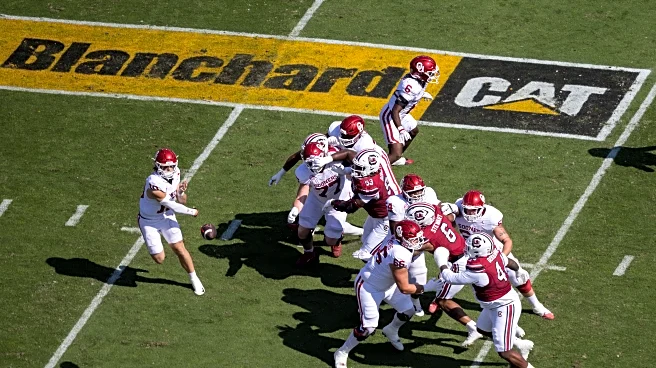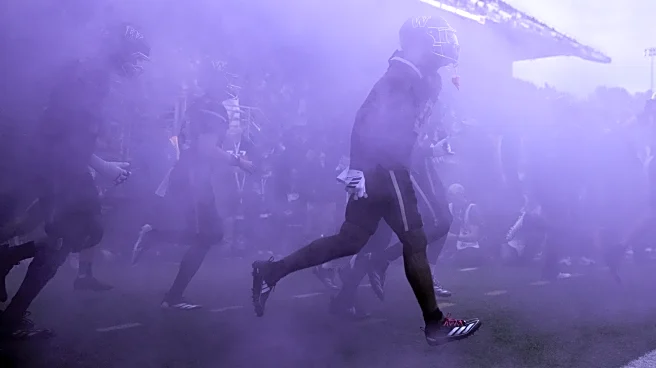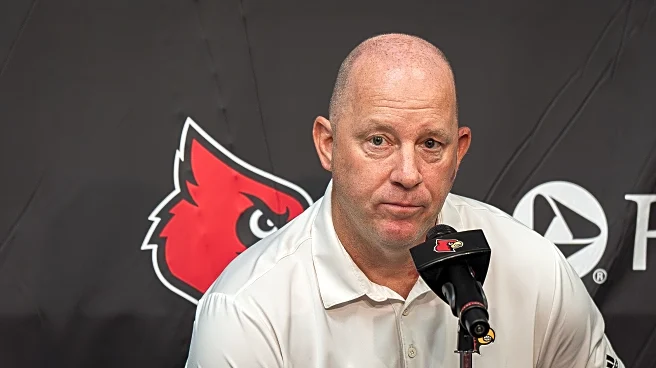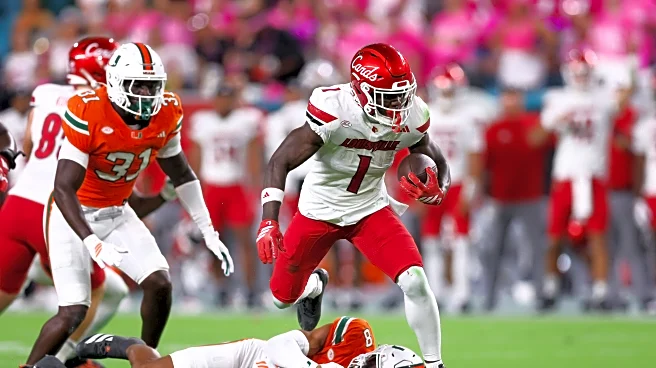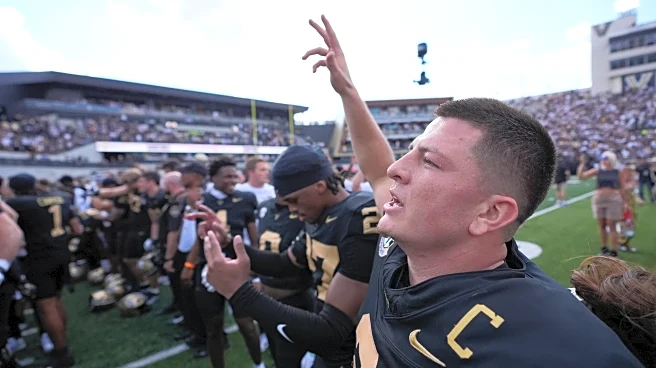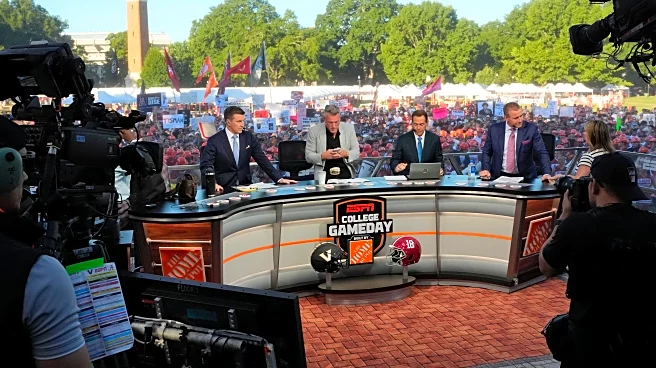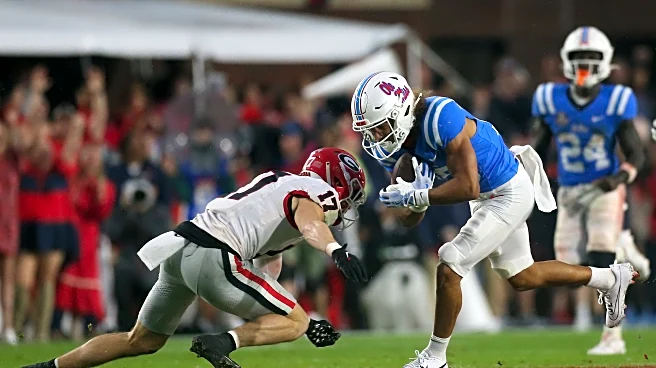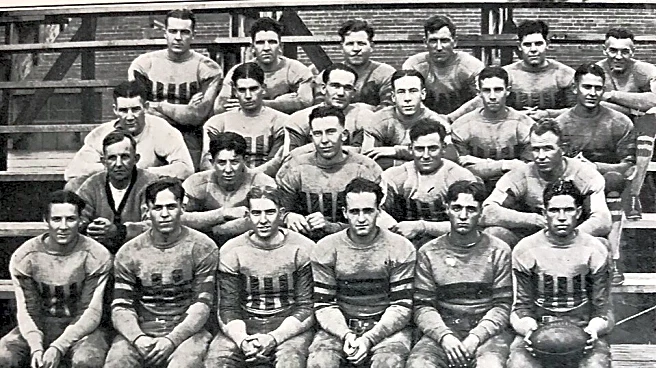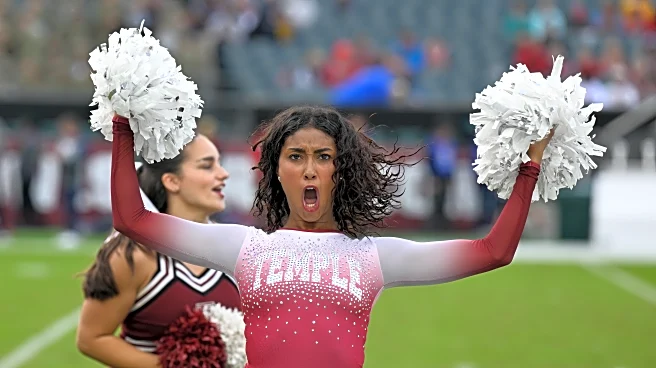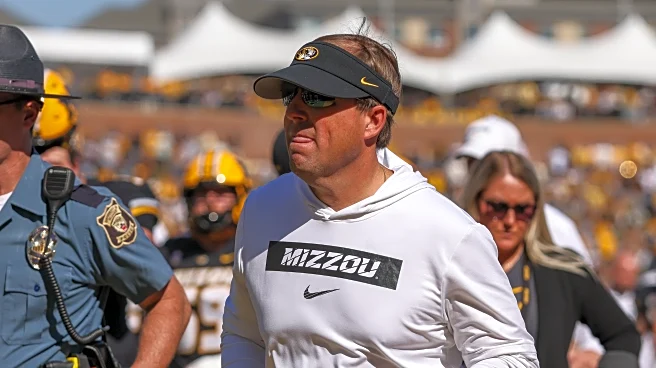What's Happening?
Universities across the United States are increasingly incorporating corporate logos on their football fields as a new revenue stream. This trend follows a recent NCAA decision to allow commercial sponsor
advertisements on the field of play, overturning a long-standing restriction. The University of Texas, for instance, has added Humann logos to its field, leveraging the company's historical ties to the institution. This move is part of a broader strategy to generate additional revenue, especially after a multibillion-dollar lawsuit settlement that permits schools to share up to $20.5 million in revenue with athletes. Other universities, such as Alabama, Penn State, and Oklahoma, have also embraced this trend, partnering with various corporations to place logos on their fields. These partnerships are seen as essential for schools to remain competitive and financially viable in the evolving landscape of college athletics.
Why It's Important?
The introduction of corporate logos on college football fields marks a significant shift in how universities generate revenue and support their athletic programs. This development is crucial as it provides schools with a new financial avenue to support athletes and fund scholarships, especially in light of recent changes allowing direct revenue sharing with athletes. The move could potentially level the playing field among universities, enabling smaller schools to compete with larger institutions by attracting corporate sponsorships. However, it also raises questions about the commercialization of college sports and the potential impact on the traditional college sports experience. Stakeholders, including athletic directors and coaches, are navigating these changes to ensure they maximize revenue while maintaining the integrity of their programs.
What's Next?
As the trend of incorporating corporate logos on football fields gains momentum, the NCAA is considering further changes, such as allowing commercial logos on uniforms. This potential development could open additional revenue streams for universities. Athletic directors, like Nebraska's Troy Dannen, are carefully evaluating the market value of such sponsorships to ensure they maximize potential earnings. The ongoing evolution of college athletics will likely see more schools exploring innovative ways to generate revenue, balancing commercial interests with the need to support student-athletes and maintain competitive programs.


